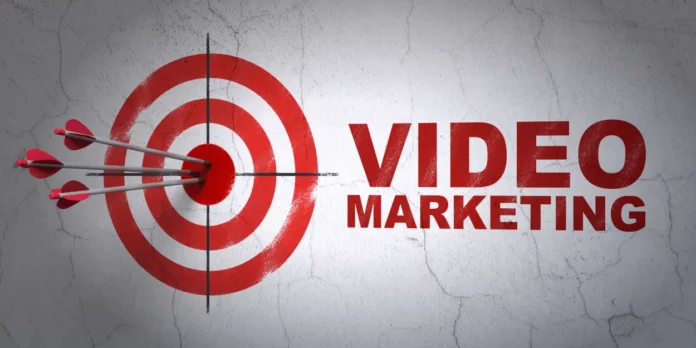In the dynamic landscape of digital marketing, video marketing stands as a compelling and influential strategy, reshaping the way businesses connect with their audience.
Understanding the nuances of video marketing is essential for brands aiming to thrive in an era where visual content dominates online spaces.
This article embarks on a comprehensive exploration of video marketing, unraveling its core principles, strategic advantages, and evolving trends.
Whether you’re a seasoned marketer adapting to the visual-centric digital landscape or a business owner keen on maximizing engagement, this blog post on video marketing aims to provide actionable insights into the power of storytelling through dynamic visuals.
By the end of this article, you’ll not only grasp the fundamentals of video marketing but also gain practical strategies to leverage its potential for enhancing brand visibility, building meaningful connections, and driving impactful results in the competitive online arena.
What Is Video Marketing?
Video marketing is a digital marketing strategy that involves creating and utilizing videos to promote products, services, or brands.
It leverages the visual and auditory appeal of videos to engage and connect with the target audience.
Through platforms like YouTube, social media, and websites, businesses share compelling videos that convey messages, showcase products, or provide valuable content.
Video marketing aims to captivate viewers, evoke emotions, and drive specific actions, such as making a purchase or sharing the content.
It’s a versatile tool, offering storytelling opportunities and enhancing brand visibility in an engaging and shareable format.
How Does Video Marketing Work?
Video marketing works by strategically crafting and distributing video content to engage, inform, and connect with target audiences.
It begins with defining clear objectives and understanding the audience’s preferences and behaviors.
Brands create compelling video content—ranging from explainer videos, product demos, testimonials, to storytelling narratives—tailored to resonate with specific demographics or buyer personas.
Distribution across diverse platforms—social media, websites, YouTube—ensures broad visibility.
Engaging storytelling, visually appealing content, and concise messaging captivate viewers, fostering emotional connections and brand recall.
Calls-to-action within videos encourage audience interaction, directing them to desired actions like visiting websites or making purchases.
Analytics tools measure video performance, tracking metrics like views, engagement, and retention rates.
Insights gleaned from these metrics inform future strategies, optimizing content for increased engagement and better conversions.
Video marketing thrives on storytelling, visual appeal, and emotional resonance, providing a dynamic and powerful medium to communicate messages, drive engagement, and achieve marketing goals.
What Are The Benefits Of Video Marketing?
Here are some advantages of video marketing:
1. Enhanced Engagement and Attention.
Video marketing offers a compelling way to captivate audiences and drive engagement.
Visual content has a unique ability to grab attention and hold viewers’ interest more effectively than text or static images.
The dynamic nature of videos—incorporating visuals, audio, and often storytelling—creates an immersive experience that resonates with audiences on an emotional level.
Studies have shown that videos can significantly increase engagement metrics, such as likes, shares, comments, and time spent on a webpage.
By delivering information in an engaging and entertaining format, video marketing can effectively convey messages, evoke emotions, and leave a lasting impression on viewers, leading to higher retention rates and increased brand recall.
2. Improved Communication and Storytelling.
Video marketing provides a powerful platform for brands to communicate their messages and tell compelling stories.
Unlike text-based content, videos offer a multi-dimensional storytelling approach by combining visuals, audio, music, graphics, and narrative elements.
This enables brands to convey complex ideas, showcase products or services, or share their brand story in a more comprehensive and engaging manner.
Through videos, businesses can humanize their brand by showcasing behind-the-scenes footage, customer testimonials, or employee interviews, fostering a deeper connection and authenticity with their audience.
The emotional impact of visual storytelling through videos can evoke empathy, build trust, and resonate with viewers on a personal level, creating a more memorable and meaningful brand-consumer relationship.
3. Increased Conversion Rates and Sales.
Video marketing has demonstrated its ability to positively impact conversion rates and drive sales for businesses.
Studies have consistently shown that incorporating videos in marketing strategies can lead to higher conversion rates.
Product videos, demonstration tutorials, or explainer videos can effectively showcase the features and benefits of a product or service, providing potential customers with a clearer understanding and confidence in their purchase decisions.
Additionally, videos often contribute to higher click-through rates in email marketing campaigns or social media posts, leading to increased traffic and conversions.
The visual appeal and engaging nature of videos can influence purchase intent, encouraging viewers to take desired actions, such as signing up for a newsletter, making a purchase, or contacting a business for more information.
4. Enhanced SEO and Online Visibility.
Video content has a positive impact on search engine optimization (SEO) efforts, contributing to improved online visibility and search rankings.
Search engines like Google prioritize websites with diverse and engaging content, including videos.
Integrating videos on webpages can increase dwell time, reduce bounce rates, and signal to search engines that the content is relevant and valuable to users.
Furthermore, hosting videos on platforms like YouTube—owned by Google—provides an additional opportunity to optimize content for search engines by leveraging keywords, titles, descriptions, and tags.
Video thumbnails often appear in search results, increasing the likelihood of clicks and driving traffic to websites.
As video consumption continues to rise, businesses that incorporate video content into their online strategies are likely to gain a competitive edge in attracting and retaining online audiences.
5. Versatility and Accessibility Across Platforms.
Video content offers versatility and accessibility across various digital platforms and devices.
With the prevalence of smartphones and high-speed internet, consumers prefer consuming content on-the-go, making videos an ideal format for reaching audiences across different devices and platforms.
Social media platforms like Facebook, Instagram, TikTok, and LinkedIn have prioritized video content, offering features like live streaming, stories, and video ads, making it easier for businesses to reach their target audience.
Moreover, the rise of short-form video content and the popularity of platforms like YouTube and Vimeo have expanded opportunities for businesses to create diverse video content tailored to specific platforms and audience preferences.
6. Stronger Brand Recognition and Trust Building.
Video marketing plays a pivotal role in strengthening brand recognition and fostering trust among consumers.
Consistent and well-crafted video content helps reinforce brand identity by showcasing brand values, personality, and unique selling propositions.
Through engaging storytelling and visual elements, businesses can create a memorable brand image that resonates with their target audience.
When consumers repeatedly encounter quality video content from a brand, it solidifies brand recall and familiarity, leading to increased trust and credibility.
Building this trust is vital in nurturing long-term relationships with customers and establishing a loyal customer base.
7. Accessibility to Wider Audiences and Global Reach.
Videos have the inherent capability to transcend language barriers and reach diverse audiences across geographical boundaries.
With subtitles, translations, or visually-driven content, videos can cater to multicultural audiences, making them accessible to a global demographic.
Additionally, the shareability of video content on social media and other digital platforms enables content to go viral, reaching audiences far beyond a brand’s immediate followers.
This accessibility to a wider audience pool enhances brand visibility and can facilitate the expansion of businesses into new markets, tapping into previously unreachable or untapped demographics.
8. Measurable Analytics and Insights.
Video marketing provides robust analytics and insights, allowing businesses to measure the performance and effectiveness of their video campaigns.
Detailed metrics, such as view counts, watch time, engagement rates, click-through rates, and audience demographics, offer valuable insights into audience behavior and preferences.
By analyzing these metrics, businesses can refine their video marketing strategies, optimize content, and tailor future campaigns to better resonate with their target audience.
Additionally, A/B testing different video formats, lengths, or content can provide actionable data to improve the overall effectiveness of video marketing efforts.
9. Cost-Effectiveness and Long-Term Value.
Contrary to the misconception that video production is expensive, advancements in technology have made video creation more accessible and cost-effective for businesses of various sizes.
With the availability of smartphones, user-friendly editing software, and affordable production equipment, businesses can create high-quality videos without exorbitant costs.
Furthermore, the long-term value of video content is substantial.
Evergreen videos that remain relevant over time continue to attract views, engagement, and conversions, providing ongoing value to businesses.
Repurposing video content across different marketing channels and campaigns can extend its lifespan, maximizing its return on investment (ROI) over time.
10. Emotional Connection and Memorable Impact.
One of the greatest strengths of video marketing lies in its ability to evoke emotions and leave a lasting impact on viewers.
The combination of visual and auditory elements in videos allows brands to evoke emotions, trigger responses, and create memorable experiences for their audience.
Emotional storytelling, relatable narratives, or impactful visual content can resonate deeply with viewers, fostering a strong emotional connection to the brand.
This emotional engagement not only enhances brand affinity but also increases the likelihood of viewers sharing the content, amplifying its reach and impact.
What are the Drawbacks Of Video Marketing?
Here are some disadvantages of video marketing:
1. Production Costs and Time Investment.
One significant drawback of video marketing is the substantial investment of time, resources, and finances required for production.
Creating high-quality video content demands skilled personnel, equipment, and editing software, which can be costly.
From scripting and storyboarding to shooting and editing, each phase of video production involves significant time and effort.
Furthermore, the need for professional-grade equipment, such as cameras, lighting setups, and editing software, adds to the production expenses.
For businesses operating on a tight budget or with limited resources, the high cost of producing compelling video content can be a considerable barrier.
Additionally, the time-intensive nature of video creation, from planning to execution, can slow down the content creation process, impacting the speed at which marketing campaigns can be executed.
2. Accessibility and SEO Challenges.
Another drawback of video marketing is the accessibility and search engine optimization (SEO) challenges associated with video content.
While videos can be engaging and visually appealing, they might present accessibility issues for certain audiences, including individuals with disabilities who rely on screen readers or those with limited internet bandwidth.
Closed captions, audio descriptions, and transcript options can enhance accessibility, but their implementation adds complexity and time to the production process.
Moreover, from an SEO perspective, search engines primarily index text-based content, making it easier to discover through search queries.
Video content might face challenges in visibility and search engine rankings if not optimized effectively with relevant metadata, keywords, and supporting text-based content.
As a result, achieving high visibility and organic reach for video content in search engine results can be more challenging compared to text-based content.
3. Engagement and Attention Span Limitations.
While videos can be highly engaging, they also face limitations concerning audience attention spans.
Research suggests that viewers’ attention spans are relatively shorter when consuming video content compared to text-based or static visual content.
With the abundance of content available online, capturing and retaining viewers’ attention throughout a video can be challenging.
Marketers must craft concise, compelling content to ensure viewers remain engaged and absorb the intended message within a limited timeframe.
Failing to capture attention early in a video can result in viewers disengaging or abandoning the content, impacting the effectiveness of the marketing efforts.
4. Platform and Format Limitations.
Different social media platforms and devices have varying requirements and preferences for video formats, aspect ratios, and lengths.
Tailoring video content to suit these platform-specific guidelines can be time-consuming and might require creating multiple versions of the same video to maximize reach across various platforms.
Moreover, the evolution of new video formats and trends demands marketers to adapt continuously to changing preferences and consumption patterns.
Staying updated and agile in creating video content that aligns with evolving platform features and audience preferences can be challenging and might require constant experimentation and optimization.
5. Measurement and ROI Challenges.
Measuring the return on investment (ROI) and the effectiveness of video marketing campaigns can pose challenges.
Unlike some digital marketing formats where metrics like click-through rates or conversions are easily trackable, attributing specific metrics directly to video content can be more complex.
Determining the impact of videos on brand awareness, customer engagement, or conversion rates might involve analyzing multiple touchpoints and interactions, making it challenging to quantify the direct impact of video marketing efforts.
Additionally, tracking viewer engagement, retention rates, and conversion metrics accurately across different platforms or devices can be intricate, making it challenging to assess the true ROI of video marketing campaigns.
6. Bandwidth and Loading Times.
Video files are larger and can consume more bandwidth compared to other types of content.
For viewers with limited internet access or slower connections, high-resolution or lengthy videos might lead to prolonged loading times or buffering issues.
This can result in a poor user experience, leading to frustration and potential abandonment of the video.
Moreover, in regions or demographics where internet connectivity is not robust, relying heavily on video content might limit the reach and accessibility of marketing campaigns, impacting the intended audience.
7. Saturation and Content Overload.
The proliferation of video content across various platforms has led to content saturation, making it increasingly challenging for marketers to stand out amidst the vast amount of video content available online.
With numerous brands vying for consumers’ attention, there’s a risk of content overload, causing viewers to experience fatigue or disinterest in video content.
Cutting through the noise and delivering content that resonates with the audience’s interests and preferences becomes more difficult in an oversaturated video landscape.
8. Incompatibility with Certain Campaign Goals.
Not all marketing objectives align seamlessly with video content.
Some campaigns might require specific messaging, detailed explanations, or interactive elements that are better conveyed through text, infographics, or other content formats.
Video content, while engaging, might not always be the most effective medium for conveying complex or technical information.
Understanding when video content serves the campaign’s goals and when other formats might be more suitable is crucial in ensuring effective communication and meeting specific marketing objectives.
9. Risk of Misinterpretation or Miscommunication.
The visual and auditory nature of video content can sometimes lead to misinterpretation or miscommunication of the intended message.
Visual storytelling can be powerful, but it also leaves room for different interpretations based on cultural, social, or individual perspectives.
Ensuring that the message conveyed through video content is clear, culturally sensitive, and aligns with the brand’s values is essential.
Missteps in messaging or unintentional misinterpretation can potentially damage brand reputation and lead to misunderstandings among the audience.
How To Start Video Marketing?
Here are the steps to get started with video marketing:
1. Define Your Goals and Target Audience.
Begin by defining clear goals for your video marketing efforts.
Determine what you aim to achieve—whether it’s increasing brand awareness, driving website traffic, boosting engagement, or generating leads.
Understanding your objectives will guide the content and strategy of your videos. Simultaneously, identify your target audience.
Define their demographics, interests, pain points, and preferences.
This understanding helps tailor your video content to resonate with your audience, making it more impactful and engaging.
Conduct market research, analyze existing customer data, and create buyer personas to gain insights into who you’re creating videos for.
Aligning your goals with your audience’s needs is crucial for crafting compelling video content that resonates and drives results.
2. Develop a Video Content Strategy.
Crafting a comprehensive video content strategy is essential for a successful video marketing campaign.
Begin by outlining the types of videos you plan to create based on your goals and audience preferences.
Consider a mix of educational, entertaining, product-focused, testimonial, or behind-the-scenes videos to cater to different stages of the buyer’s journey.
Plan the format, style, tone, and length of your videos based on the platform and audience behavior.
Determine the frequency of video production and distribution to maintain consistency and keep your audience engaged.
Additionally, establish a content calendar to organize your video release schedule and align it with other marketing initiatives.
A well-defined content strategy ensures a cohesive approach to video creation, distribution, and measurement, helping you stay focused and consistent in your video marketing efforts.
3. Invest in Quality Equipment and Tools.
Creating high-quality videos is essential to captivate your audience and convey your message effectively.
Invest in good-quality equipment and tools that align with your budget and production needs.
A decent camera, microphone, lighting equipment, and editing software are fundamental for producing professional-looking videos.
While high-end equipment can enhance production quality, it’s not always necessary, especially for beginners.
Many smartphones offer impressive video recording capabilities, and affordable external microphones and lighting options are available for better audio and visual quality.
Experimenting with different tools and equipment can help find the right balance between quality and affordability for your video production needs.
4. Craft Compelling and Engaging Content.
The content of your videos plays a pivotal role in capturing and retaining viewers’ attention.
Focus on creating content that is valuable, relevant, and engaging to your target audience.
Start with attention-grabbing hooks in the first few seconds to captivate viewers and encourage them to continue watching.
Storytelling is a powerful tool—use narratives, anecdotes, or real-life examples to connect emotionally with your audience.
Incorporate visuals, graphics, and animations to enhance the storytelling and make your videos visually appealing.
Keep your videos concise and to the point, respecting your audience’s time and attention span.
Always aim to provide value—whether it’s solving a problem, educating, entertaining, or inspiring your audience.
5. Optimize for SEO and Distribution Channels.
Optimizing your videos for search engines and choosing the right distribution channels is crucial for reaching a wider audience.
Use relevant keywords in your video titles, descriptions, and tags to improve visibility and discoverability.
Leverage SEO best practices to increase the chances of your videos appearing in search results on platforms like YouTube or Google.
Additionally, understand your audience’s preferred platforms—whether it’s YouTube, Facebook, Instagram, LinkedIn, or others—and tailor your distribution strategy accordingly.
Each platform has its unique audience demographics and content consumption behaviors, so optimize your videos for each platform’s specifications and algorithms to maximize reach and engagement.
6. Engage and Interact with Your Audience.
Engagement is key to building a strong community around your video content.
Encourage interaction by responding to comments, asking questions, and prompting viewers to share their thoughts or experiences related to your videos.
Engage with your audience across different platforms where your videos are shared.
Hosting live Q&A sessions, conducting polls or contests, and featuring user-generated content can foster a sense of belonging and loyalty among your audience.
Actively participating in conversations and acknowledging your audience’s contributions creates a more interactive and engaging video marketing experience.
7. Measure Performance and Iterate.
Regularly analyzing the performance of your video content is essential to understand what works best for your audience.
Utilize analytics tools provided by video hosting platforms or third-party analytics software to track metrics such as views, watch time, engagement rates, click-through rates, and conversion rates.
These metrics provide insights into audience behavior and the effectiveness of your videos in achieving your goals.
Use this data to find trends, patterns, and areas for improvement.
Iterate your video content strategy based on these insights—adjust content types, formats, distribution channels, and messaging to optimize performance and better resonate with your audience.
Continuously testing and refining your approach based on data-driven insights is key to evolving and improving your video marketing efforts.
8. Collaborate and Leverage Influencer Partnerships.
Collaborating with influencers or industry experts can amplify your video marketing efforts by tapping into their established audience and credibility.
Identify influencers or thought leaders in your niche whose values align with your brand and target audience.
Collaborate on joint video projects, guest appearances, or endorsements that provide value to both your audience and theirs.
Influencer partnerships can expand your reach, increase credibility, and introduce your brand to new audiences.
Additionally, leveraging user-generated content from satisfied customers or followers can showcase authentic experiences and testimonials, further enhancing trust and engagement with your audience.
9. Stay Agile and Adapt to Trends.
The landscape of video marketing is continuously evolving with emerging trends, technologies, and consumer behaviors.
Stay agile and adaptable by keeping a pulse on industry trends, new video formats, and platform updates.
Experiment with new video styles, trends like short-form content (e.g., TikTok or Instagram Reels), or emerging technologies like virtual or augmented reality (VR/AR) to stay relevant and engage audiences in innovative ways.
Embrace new storytelling techniques, incorporate current events or cultural moments, and leverage popular trends to create timely and shareable content.
Being adaptable and willing to evolve your video marketing strategy ensures your content remains fresh, resonates with your audience, and stays ahead in a dynamic digital landscape.
Conclusion.
Video marketing emerges as a cornerstone in the digital marketing landscape, wielding unparalleled storytelling potential to captivate and engage audiences.
As delineated in this article, the visual allure and narrative depth of videos offer businesses a compelling platform for brand promotion and audience connection.
With the exponential rise in online video consumption, mastering video marketing is imperative for staying relevant.
Integrating SEO strategies, compelling visuals, and analytics-driven insights amplifies the impact of video campaigns.
Embracing this dynamic medium fosters brand authenticity and fosters a lasting connection with the modern consumer.
In the evolving digital era, video marketing stands as an indispensable tool for achieving marketing success.







